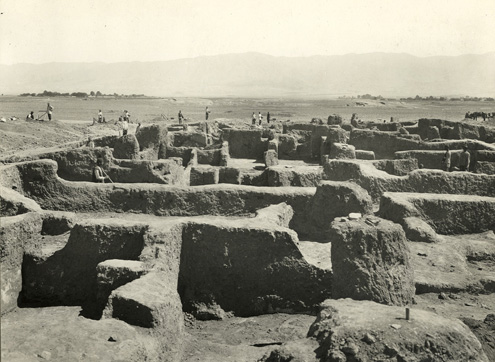
Wednesday, April 15, 2015 at 3:30 PM, Sterling Memorial Library, Memorabilia Lecture Hall, 128 Wall St entrance, New Haven, CT

Abstract
Nishapur was an important religious and commercial town in northeastern Iran, and one of the main production centers of sgraffito pottery. Sgraffito pottery is a typology that emerged in the 10th century, following the introduction of slipped glazed wares with color splashes the century before. Sgraffito immediately spread from the Syrian-Palestinian to the Iranian regions, with several production centers. In Iran, its main diffusion dates back to the 10th-12th centuries. The ruins of this town were investigated during the “Iranian expedition” of the Metropolitan Museum of Art. The gathered findings currently represent one of the most complete collections worldwide.
The combination of mineralogical, petrographic, and chemical analyses, follows a standard analytical procedure, with the aim of characterizing the artifacts was the goal of the current study. Given the precious nature of the objects, a key role is played by non-destructive techniques, such as portable X-ray fluorescence and Raman Spectroscopy. The characterization of ceramic bodies may reveal possible groupings on the basis of fabrics, besides understanding the sources of the raw materials used in the production. The analysis of the glaze and its interaction with the ceramic body is a tool to unravel the production technology.
The main goals of the research are:
- to identify the compositional fingerprint, that may define a “reference group” for the Nishapur sgraffito production;
- to increase the knowledge on the Early-Middle Islamic culture, in particular by examining technological and decorative changes that occurred in the Iranian ceramic industries.
Thorough characterization of sgraffito wares represents the key point towards an ideal reference group for Nishapur, for the first time, for this ceramic typology. This data also might be used in the future as a comparison term to identify possible fakes that, produced since the early 20th century and nowadays occurring in the market, might affect museum collections.
Presented by Elena Basso

Biography

Dr. Elena Basso received her PhD in Earth Sciences in 2004 from the University of Pavia, Italy, where she spent the first ten years of her career. Her research focuses on the archaeometric study of archaeological and historic materials (i.e., ceramics, glass, mortars, stuccoes).





